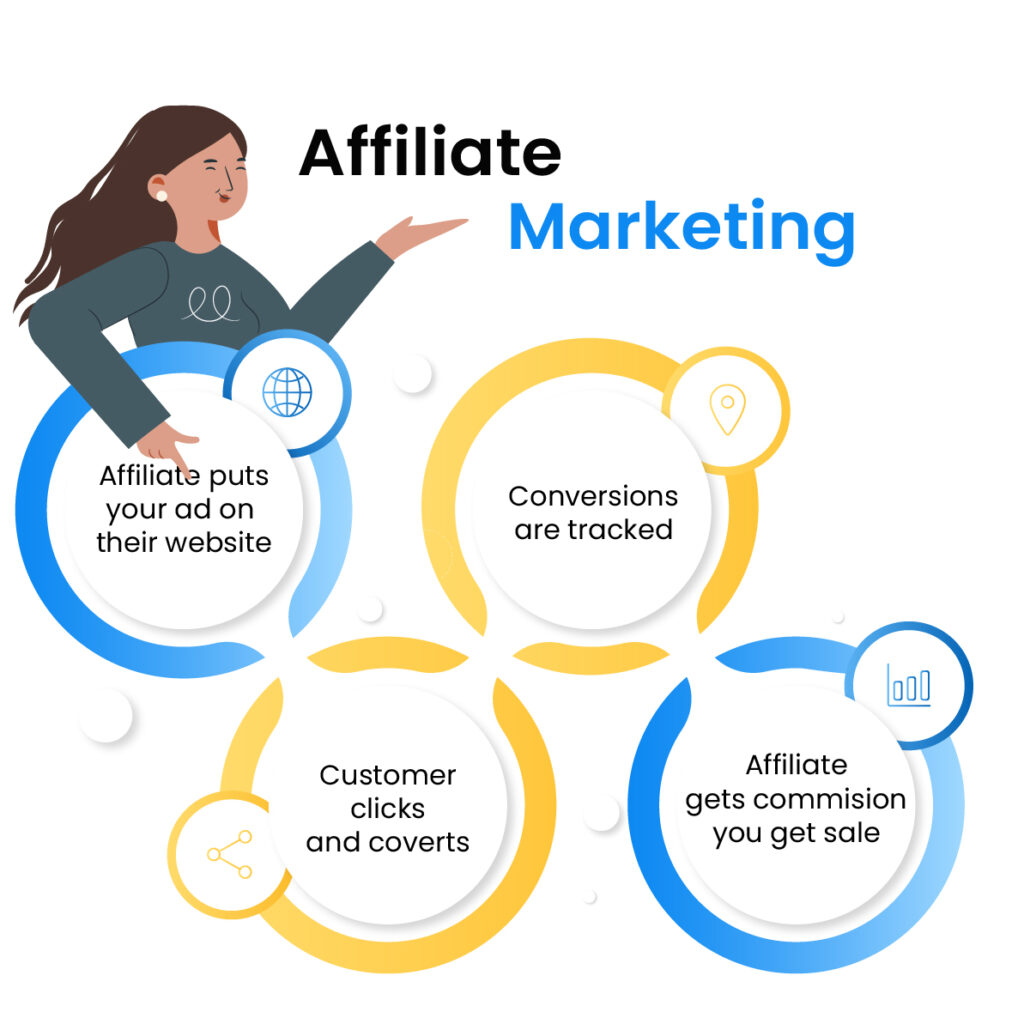From detecting and preventing fraud to recruiting new partners, managing affiliate programs can be intimidating. That’s why we’ve put together this guide to help you learn how to manage an affiliate program.
- Detecting Fraud
- Recruiting Partners
- Getting Affiliates Active
- Keeping Them Motivated
- Increasing Their Output
- Repeat
1. Detecting Fraud
Fraud is one of the things that you might be worried about if you have an affiliate program. But with a few checkpoints and a hands on approach, you can help to eliminate or prevent a majority of it.

- Manual approvals – If you have an in house program or you’re on a network, you need to do approvals manually. Check the affiliate’s listed site for content relevance, look to see if it follows your guidelines and also that it actually exists. You can also do a whois search to determine if they own the domain or not.
- Contact each partner before you approve them – Contact each affiliate and have a conversation. If you have their phone numbers, give them a call and if you only have their email, send them an email when they apply. If you don’t hear back, try a follow up or two over the next week. You’ll be able to pick up on patterns of fraudulent partners or people who may be pulling a bait and switch so you won’t have to edit bad orders later on.
- Check weekly reports for consistency – Look at your top 10 or 20 affiliates each week. If you have coupon sites in the same positions and they are also ranking for your URL plus the word coupons, chances are they are intercepting your shopping cart instead of sending you top of the funnel and value adding sales. Other times you’ll find an affiliate who doesn’t have a website or doesn’t have a clear strategy and is non responsive. These are all warning signs that you may be getting ripped off. Contact them and evaluate if they are adding value or just intercepting your shopping cart and then take the appropriate action.
- Run a returns report – After 30, 60 and 90 days, pull a report with all transactions and cross reference that in a spreadsheet with a list of returned orders from your shopping cart. Now compare that with the referring affiliate. If you have a 60 day return policy but commissions are paid out after 30 or 45 days, this is where you can detect affiliates who are placing orders and then returning once they’ve been paid. This is more common with loyalty sites or incentivized traffic.
There are other ways to determine, find and detect theft. But the strategies above are a good starting point. If you need more clarity on them, feel free to leave a comment below or contact me for a free scan of your program.
2. Recruiting Partners
Once you know how to determine which affiliates to approve in, you need to go out and find them. Here are a few strategies that we use for recruiting affiliates for our clients’ affiliate programs.

- Emails & cold calls – to successfully forge strategic partnerships with potential partners, businesses must take the time to manually reach out with personalized messages via email and telephone. Crafting tailored emails that address each partner’s individual needs can help increase the chances of establishing a connection and building a lasting relationship. Additionally, cold calling prospective partners can be a useful way to spark conversation about potential collaborations. It allows for immediate contact between both parties without needing an introductory message. When done in an appropriate fashion and tone, phone conversations provide a platform for businesses to help prospective partners understand exactly how their partnership can benefit them.
- Industry & niche tradeshows – if your company exhibits at a tradeshow, ask if visitors or attendees have a blog or website. All of these are potential partners. The same goes for anyone with a press badge where a backlink won’t make sense (affiliate links are not always backlinks and will not always help your SEO in the long run).
- Affiliate tradeshows – shows like Affiliate Summit, A4U and others will help you find a large mix of everything from bloggers and email houses to media buyers and YouTubers. They won’t be as targeted as a niche or industry show, but you can still find some solid partners ones while building your network of industry peers.
- Blogger groups and shows – There are tons of groups on Facebook and tradeshows worth attending or sponsoring like Type A Parent. Look at the attendees to see if they have quality websites and if those bloggers or webmasters can bring you new customers.
A quick warning – DO NOT SPAM the groups. Instead participate and add value by joining in the conversation without pitching your program. As you do the members may start to ask what you do and you can recruit them at that point. Or consider sponsoring and attending a show like Type A if you don’t have the time to participate in blogging communities. - Advertise – If you don’t have time to recruit manually or go to shows, advertise on websites where potential affiliates and partners read. If you are in the travel niche, look for resources that cater to how to make money travel blogging or show up in the search engines for Your Niche affiliate programs. These can sometimes be good sources of partners.
3. Getting Affiliates Active
Not all affiliates will be motivated. You need to work on activating them. Here are a few ways to do this.
- Provide tips and copy and paste banners in a welcome email.
- Create an onboarding process to help keep your brand or services in front of them. This can include emails, phone calls and strategies.
- Offer to help them with content or to get them links for their sites.

Think about when you join a membership club, hire a new service or even buy a new tool/software for your job. What makes you want to log in and really learn the ropes or make it work for you? Those same things that will motivate you to get active with that new tool or membership can be applied to your affiliate program.
4. Keeping Them Motivated
The best way to keep your partners motivated is to give them what they need, offer things they didn’t know they needed and by providing services that go beyond their expectations. Sometimes I’ll do a mini SEO audit of an affiliate’s website to help them discover certain errors or issues preventing them from growing.

Other times I’ll look for content they had a lot of success with and then create follow up, but non-competitive content for them and offer it free of charge. The content will also include their affiliate links so they can monetize it with my client’s products or services. Other times I’ll have a designer create a banner that is built specifically for their site and uses their site’s sizes. This is normally a very welcomed gift.
Being supportive and available is the key to keeping your partners motivated. Constantly inspire them with new ideas and be there to help them with implementation. That is what helps to keep them loyal and wanting to work with you.
5. Increasing Their Output
Bonus campaigns and incentives tend to work well here. Whether you’re doing a gift card, a cash bonus or even product from your store for them to review, give them a reason to push your program even more. The first step is to find out what matters most to your affiliates. You could do this by sending out a survey. When you get the results, begin applying it, but don’t just think about a program wide bonuses, go niche.

You can write to your top partners and ask what would motivate them since they are your bread and butter. Then create a custom plan for them around their responses. Next try dividing your partners up into sections like top performers (more than 50 sales per XY period, between 15 and 49 sales per XY period and 1 – 14 sales per XY period) and then offer a bonus or incentive based on incremental growth by group. You can also go by niche or type of affiliate.
There are a ton of ways to create campaigns to help increase your partners output, it’s up to you to be creative. As a bonus tip, if you have marketing tools at your disposal that are normally too expensive for a smaller company or partner, use them to help your affiliates. Many will appreciate you helping to grow their business and may return the favour with more exposure.
6. Repeat
Now start over and find new partners. Work on activating them and then see where there is more room for growth.

Having an affiliate program is a very hands on and labor intensive marketing channel. If you try a hands off approach, you’ll end up with no traffic or probably a ton of theft, poaching and fraud depending on how big your company is.
If you cannot handle the program on your own, hire an in house person who has experience or can be trained. If that isn’t an option, you can always outsource to an affiliate marketing agency like mine. If you do have time to manage it, remember that the more you put in, the more you will get, so don’t give up and keep at it.
Share this article
How to keep your affiliates happy with split commissions
Discover how Post Affiliate Pro's SplitCommission™ feature can boost affiliate motivation and engagement by fairly distributing commissions among all contributors to a sale. Learn how to implement this innovative model to enhance your affiliate program's success.
9 affiliate marketing tools that’ll help you run your affiliate program
Discover 9 essential tools to supercharge your affiliate marketing program! From visual content creation with Visme to comprehensive management with Post Affiliate Pro and audience insights via Smartlook, these tools will boost your sales and refine your strategy. Dive in to maximize your affiliate success!
A guide to different types of affiliate tracking
Explore the comprehensive guide on affiliate tracking methods like cookie, postback URL, and IP tracking to optimize your affiliate marketing strategy. Learn how Post Affiliate Pro's advanced software ensures precise tracking, maximizes sales, and provides exceptional support for seamless affiliate cooperation. Unlock your brand's potential with cutting-edge tracking solutions today!
6 reasons to use a third-party affiliate management system
Discover the top 6 reasons to invest in a third-party affiliate management system. Simplify your affiliate marketing with automated tracking, fraud detection, and user-friendly solutions that save time and reduce costs. Boost your business's efficiency and gain more control over your affiliate programs today.
Affiliate networks vs. affiliate tracking software
Explore the key differences between affiliate networks and affiliate tracking software to streamline your affiliate marketing operations. Discover which solution offers the best automation, control, and efficiency for your program. Make an informed choice to optimize your revenue strategy.













